The History of Italian Ice in New York City
By Ian MacAllen on Friday, October 10th, 2025 at 8:32 pm | 794 views
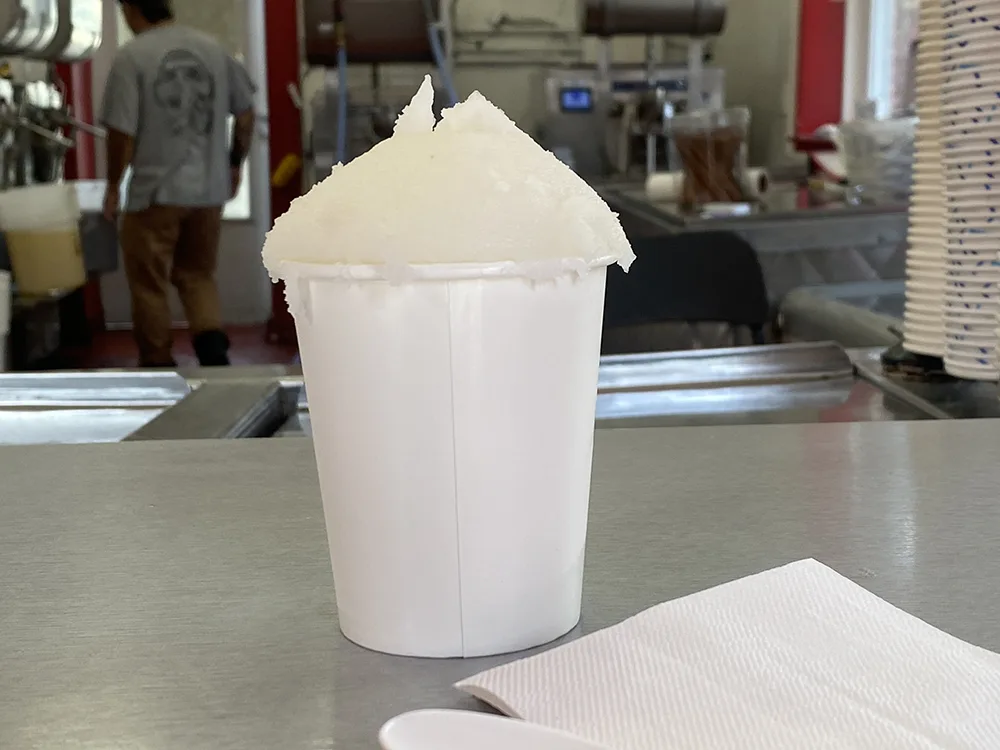
Summer tastes like Italian Ice. The sweet cold treat was introduced to American cities with Italian immigrant enclaves in the early 20th century. Those early vendors launched the Italian Ice industry from pushcarts selling penny licks before eventually growing a multi-million dollar industry.
An Old World Treat
Frozen, ice-based treats have a long history in Italy. The Roman Emperor Nero, known as a monstrous tyrant, used slave labor to bring glacial ice from the alps to the city because he enjoyed it flavored with wine, honey and spices.
From the Italian Renaissance period onward, cold drinks had become popular on the peninsula. There is an often repeated myth that Catherine de Medici brought ice cream with her to France. Though this legend is unlikely true, in the 16th and 17th centuries, fruit-flavored chilled drinks had become popular, an import from the Arab Mediterranean world known as sherbert, or sharbat or sharab in Arabic.
Italians reworked these cold drinks into sorbetto, combining sugar with berries and citrus by the 18th century, and freezing wine with ice and snow.
The first documented Italian ice, a sorbetto recipe, was created by the famed Antonio Latini, who wrote Lo scalco alla moderna, a recipe collection that has survived more than three centuries. Latini worked for Cardinal Barberini and Don Stefano, the Spanish Viceroy of Naples, and both of these kitchens were well-stocked, and serviced wealthy patrons, meaning these recipes were the luxury cuisine of the era. His recipe included flavoring ices with lemon, strawberry, and chocolate.
By the end of the 18th century, sorbetto had evolved into first, a milky sorbet, and then into ice cream. Latini had experimented with adding milk and cream, but according to Laure B Weiss’s Ice Cream: a Global History, Neapolitan Filippo Baldini had the first recipe book devoted to frozen desserts that included recipes for all of these. Frozen desserts were all the rage by the end of the 18th century, an incredible feat given the limited sources of ice. The 1773 recipe collection by VIncenzo Corrado, Il Cuoco Galante, contained dozens of sorbetto flavors including coffee, sugar plum, pomegranate, and jasmine.
Neapolitan sorbetto was a different frozen treat though than what evolved across the Straight of Messina in Sicily. Also drawing on Arab influences, the Sicilians developed Granita, the first true Italian Ice. Initially it was from ice collected during winter and stored in ice caves on the island.
However, by the 16th century, Sicilians created a device to freeze sweetened fruit juices. A cylinder rotating in a bucket was filled with snow and ice. Salt was added to the snow to further cool the cylinder, and the rotation prevented large ice crystals from forming leading to a smoother consistency. The earliest flavors included lemon, jasmine, and mulberry.
American Ice Meets Italian Immigrants
Italian immigrants in the United States saw an opportunity. Ice was abundant in America where frozen lakes in New England were harvested each winter and the ice resold all year long. The United States also pioneered the commercial ice industry, first by collecting natural ice and then perfecting manufactured ice. Some of the early markets included shipping block ice to warm cities like New Orleans, where there were plenty of Italian immigrants.
New Orleans also ultimately produced devices to make shaved ice, a treat where ice chips are made and flavored soda poured over them. These shaved ices are perhaps more similar to Roman-era desserts made by flavoring snow than to the Sicilian Granita.
Ice became commonly available in New Orleans (which is where many early cocktails were created too). Angelo Brocato, an immigrant from Sicily, opened a confectionary shop in New Orleans in 1905 where he sold a variety of frozen treats and ice creams with flavors and spices from Sicilian cuisine.
Across the country though, Italian immigrants helped popularize ice cream, sorbet, and Italian ice by making it available to a wide audience.
“Italian Americans would either wear packs or push carts full of ice and had cartons of freshly made ice cream in them that they would sell to kids, kind of like an ice cream truck today. They would ring the bell and say ‘ice cream, ice cream’ and the kids would come,” Dr. Amy Brady told me during an interview about her book Ice: From Mixed Drinks to Skating Rinks–a Cool History of a Hot Commodity.
Italian immigrants also often worked in the ice trade as well, delivering block ice to homes where it was kept in an icebox. Insulated iceboxes were early refrigerators that kept food cold using the ice that was harvested in winter, or later, manufactured in a factory where it was more economical than household cooling.
Italian Ice In New York City
The immigrant street vendors were seen as a nuisance. Besides selling penny lick ice creams, immigrants often sold fruit and other foods from pushcarts. Cities everywhere saw this industry as a threat to law and order, and a way of oppressing the immigrant and ethnic groups.
In Chicago, for instance, food carts and trucks were banned. The ban on street carts actually led to more brick and mortar shops that sold Chicago-style hot dogs and Italian Beef sandwiches, and was in place well into the 21st century.
In New York, Mayor Fiorello La Guardia built public markets where vendors were forced off the streets and indoors where they had running water and protection from the elements. The market program was launched in the 1930s and stalls rented to the people who once had pushcarts. Today, few of these old markets remain. One of the last remaining markets was Essex Market, which has been relocated to a redevelopment project in the Lower East Side, and the old market awaits demolition.
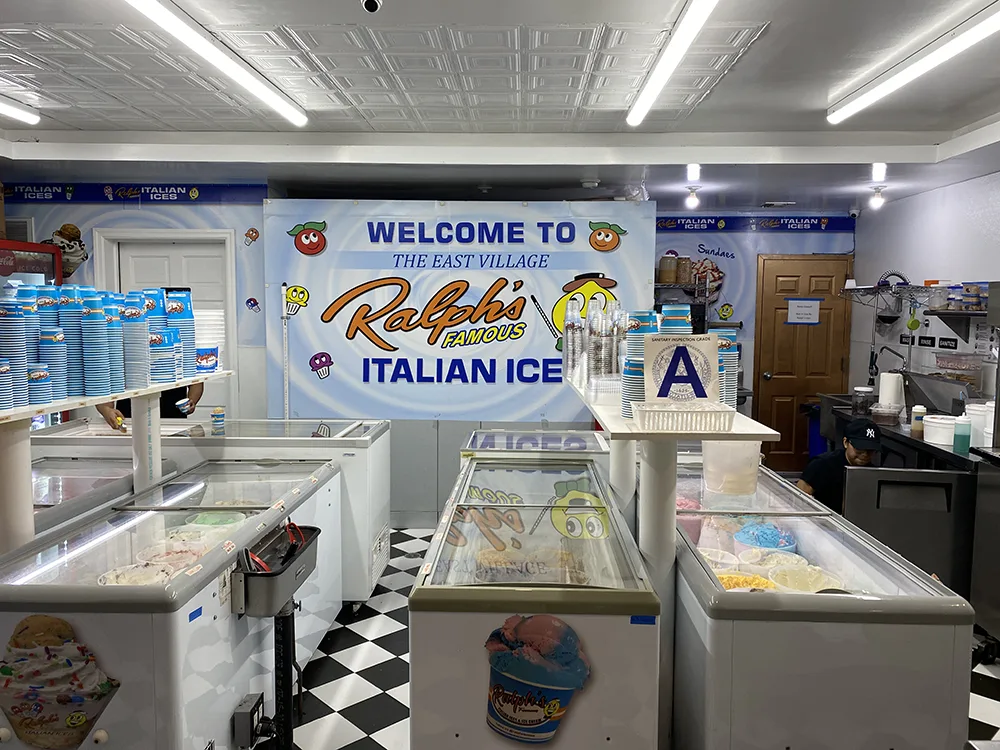
The New York Italian ice shops began to open during this time too. Ralph Silverstro first started selling Italian ice from a truck in 1928. But following World War II, he opened a physical location in Port Richmond on Staten Island in 1949. Like many Italian ice shops, his was originally only opened in March and then closed up at the end of summer.
Ralph’s daughters Lucille and Elise took over the business in 1966, and Ralph’s grandchildren, Larry, John, and Mike, began working in the shop in 1985.
Today, Ralph’s Italian Ice now has shops across the city, on Long Island and in New Jersey as well. As the chain has grown, so has the list of flavors. There are now more than one hundred, and come in a range of flavors beyond the fruit of the original Italian ices.
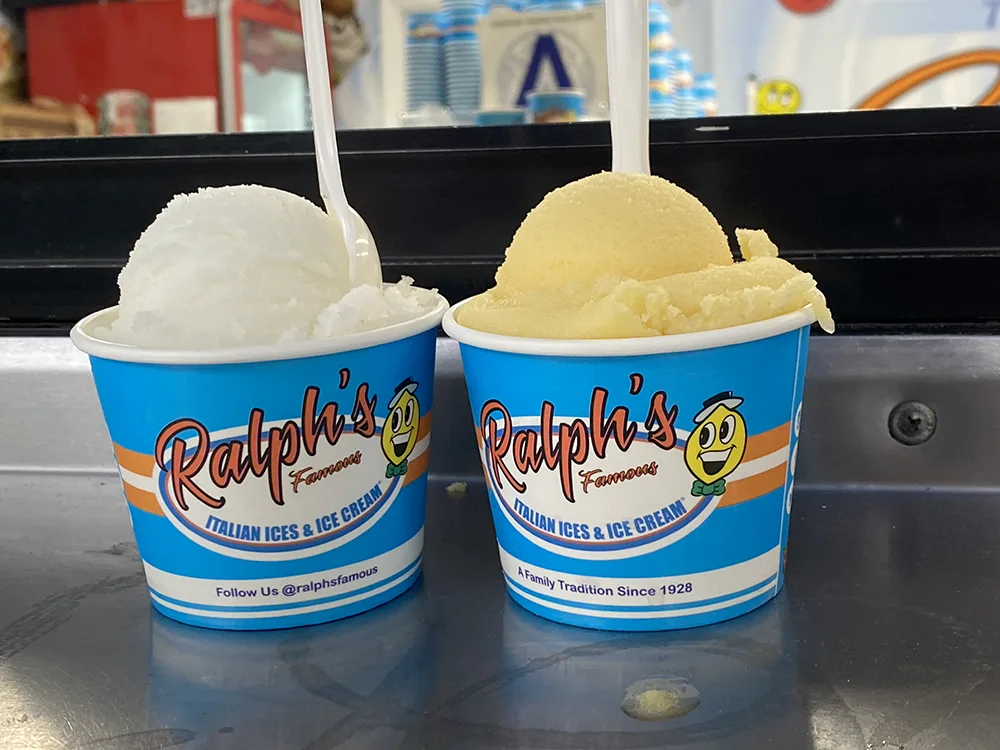
In Queens, Nicola Benfaremo began manufacturing Italian ice from his garage around 1944 or 1945. Eventually he and his son Peter Benfaremo opened an ice stand at the intersection of 108th Street, 52nd Avenue, and Corona Avenue in Corona, Queens.
Peter Benfaremo became known as the Lemon Ice King of Corona, a moniker earned for the lemon ice he initially sold. The family-owned shop created all their own recipes, with peanut butter flavor regularly cited as a specialty. By the 1970s, they had 25 flavors of ice, and today advertise more than 50.
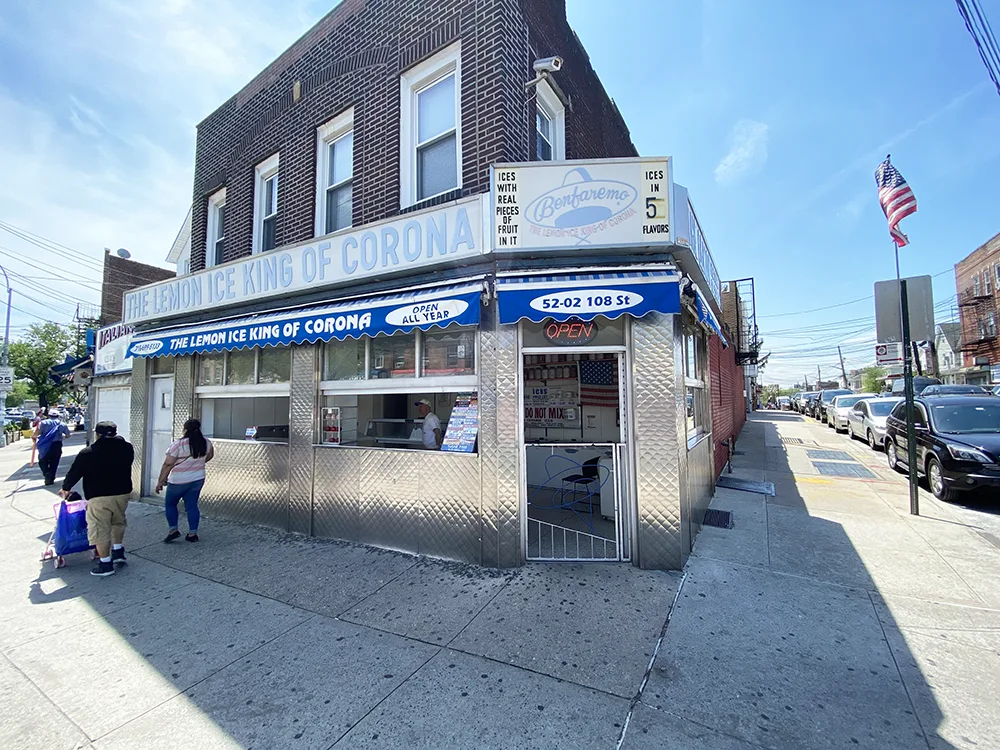
Unlike Ralph’s, the Lemon Ice King operates all year round, though cuts back hours in the winter.
Benfaremo is not the only ice royalty that sold Italian ice in New York. Ices Queen of America was a wholesaler selling to places as far away as Philadelphia when the owner, Leo Giammona, apparently delisted his number to avoid adding new accounts (which might explain why its seemingly no longer around).
The original Ices Queen dated back to the 1920s. Giammona acquired it in 1968, and built up a wholesale business. According to Eliot Cohen in the Daily News, the Ices Queen saved money in the manufacturing process by using processed fruit rather than whole, fresh fruit. The lemon, for instance, relies on puree.
In Brooklyn, Uncle Louie G, was a relative newcomer to the space that has grown rapidly since it was founded in 1999. The Italian ice shop first opened in Prospect Park. The company’s website tries to imply the shop dates back to the late 1950s. Elyssa Goldberg, writing for BKLYNR, points to the company’s website where a description points a retro picture, and several sources have incorrectly reported that its operated since 1959.

Louie G has a mustachioed mascot, and franchise locations across the city. The founders, John and Carmen Russo, eventually sold the business to Dino Russo, John’s brother who saw the potential to grow the business. Dino expanded the store on a massive scale with more than 50 stores in 8 states.
The large-scale operation means access to professional research and development teams who have developed unique flavors, many of them Brooklyn-themed like cannoli, spumoni, and one based on the Joyva Jelly ring, a hundred-year-old Brooklyn confectionery invented by Ukrainian immigrant Nathan Radutzky, and his wife Ray.
Uncle Louie G started with a factory in Brooklyn, but has since been priced out, moving production to Staten Island.
Italian ices have long been common at the city’s pizzerias too. Gino’s Italian Ice helped make that happen, and the iconic sign advertising the frozen treats were a summer time tradition.
Gino Broncanelli, a Sicilian immigrant who arrived in the city in 1955. In the early 1960s, he launched an Italian ice business with his wife. They worked initially from their Brooklyn home, and eventually began manufacturing Gino’s Italian Ices from a plant near the border of Sunset Park and Borough Park, Brooklyn. The recipe was simple: sugar, fruit, ice.
Broncanelli also owned a pizzeria, and pizzerias became the primary distribution for his frozen product. The factory would shut down each winter, and the supply of Italian would dwindle in the pizzerias until the spring.
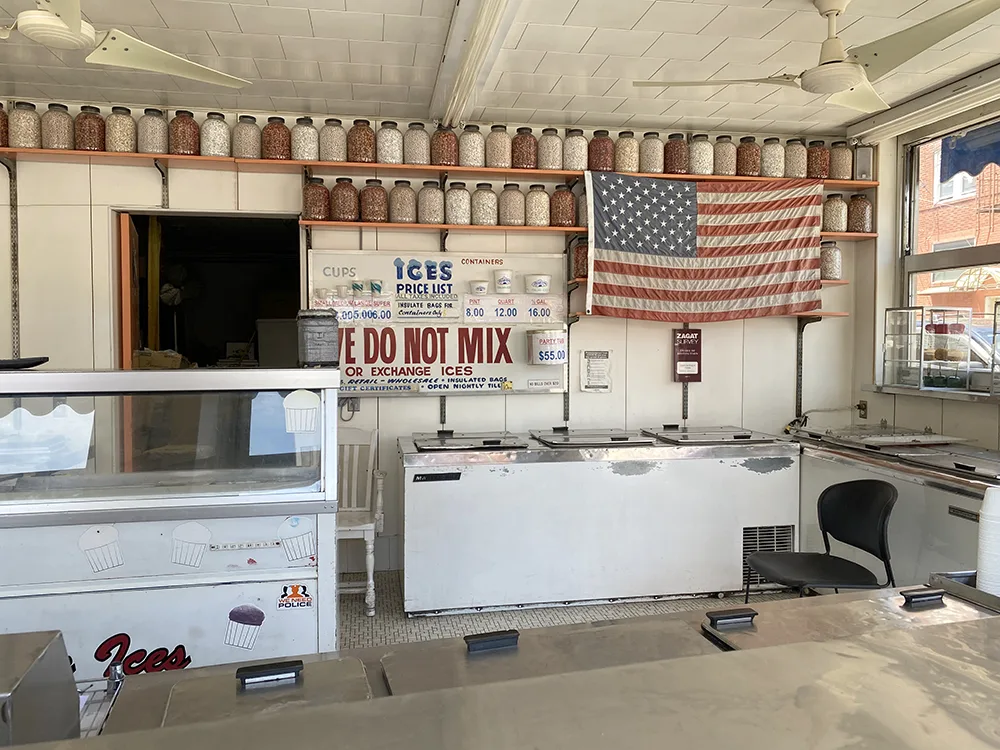
The post-war period in New York saw Italian Ice grow in popularity, but at the time, most companies sold bulk, wholesale volumes. That’s where Eugene and Doris Centrone found a way to enter the market. Centrone found a way to innovate with a packaged, six-ounce, single-serving cup.
The Centrone cups became a popular grocery store product. The majority of households in the pre-war period didn’t have at-home freezers, but by the 1950s, home refrigeration was much more common, and that corresponded with the rise of the availability of frozen foods for home kitchens.
Centrone also patented equipment for displaying the ices. Initially, the couple manufactured the brand from Corona, Queens, but by 1971, when the operation was selling 5 million cups a year, they relocated the factory to Virginia.
Eventually, Centrone was sold to Schrafft’s Ice Cream, one of the spinoffs created when the lunch counter chain was acquired and broken up in the 1960s. Centrone continued to be manufactured by Shrafft’s Ice Cream Co., which also acquired the brand Sedutto, a Manhattan ice cream brand founded in 1922. Since then, the Centrone trademarks have been abandoned.
There’s one iconic New York Italian Ice brand without an Italian connection. Marinos Vourderis, a Greek immigrant, founded Marino’s Italian Ices after accidentally coming into possession of an ice cream machine.
Vourderis worked construction after arriving from Athens, but when a customer was unable to pay a fee, Vourderis ended up with an ice-cream machine the contractor had installed. Vourderis and his partner Jerry Panos launched the business in time for the 1964 World’s Fair in Flushing Meadows, Queens after developing his own recipe through various experiments. They bought up several stands along the way to success, but moved toward pre-package single servings sold wholesale. The bright yellow cups are well known, sold nationally, and helped make Vourderis a millionaire.
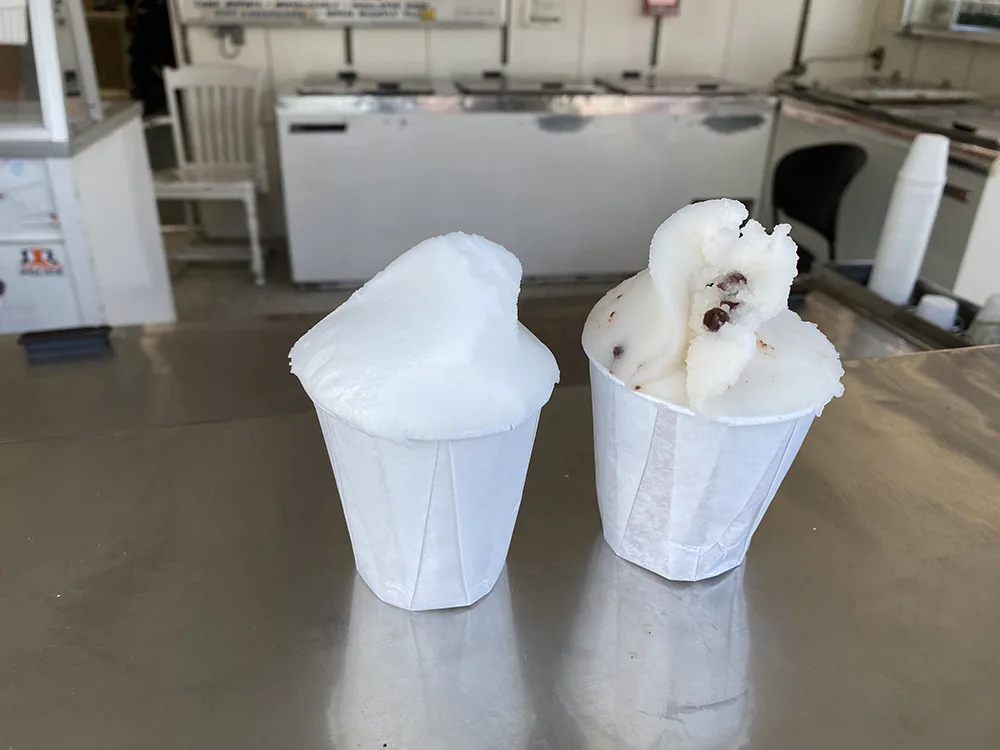
Italian immigrants brought the tradition of Italian ice with them wherever they settled. In cities like Chicago and Philadelphia, local shops have similar stories as those in New York (Although in Philadelphia, the preferred term is water ice, or “wud-dah” ice).
Chains like Rita’s Water Ice, from outside Philadelphia, have continued to expand with more than 500 locations. There’s new innovation too, like Uncle Louie G’s limited edition “Dubai Chocolate” flavor. But one thing is certain, whether it’s made with fresh fruit in the back of a local shop or produced in a factory and shipped across the country, Italian ice is a favorite of all Americans today.


